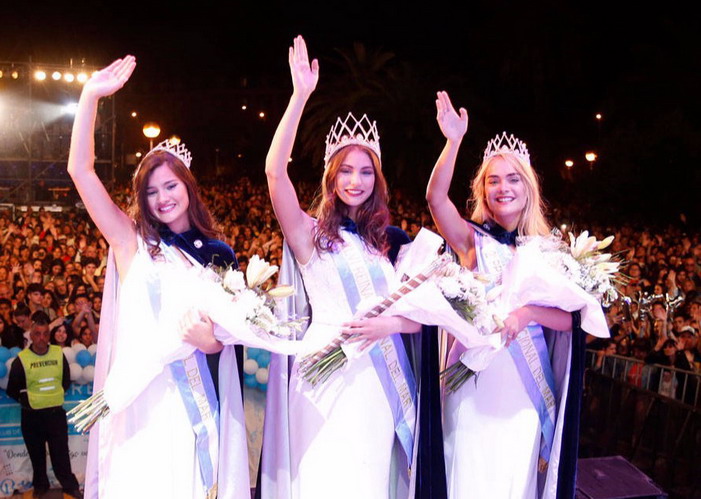History of the National Sea Festival
In the month of February 1910, in the city that was already beginning to establish itself as a tourist center par excellence, the idea of electing and crowning the National Queen of the Sea arose. On February 23 of that same year, the election was held in the luxurious and aristocratic main hall of the Hotel Bristol where twelve beautiful young daughters of bathers and fishermen participated as determined by the regulations.
The title consecrated a slender 17-year-old teacher as a new sovereign: Emilia Bonacci, who was not from Mar del Plata but from Buenos Aires, but worked at a local school and lived in the La Cava family home. Their princesses were Vicenta Carboni, Socorro García, Antonia Martínez, Basilia Martínez, Pilar Bordoni and Dolinda Carboni, and the jury was made up of Zelmira Paz de Gainza, Otilia Alcorta de Rodríguez and María Roca Demarchi. The coronation party took place in the Odeon theater and the pioneer queen along with her court of princesses was paraded in a Roman ship, an allegorical carriage ten meters long and profusely illuminated. The procession toured different streets of the city and was flanked by sailors and children with torches.
Years later, a new election is held and that is how, in 1932, among nine finalists, 19-year-old Dora Lombardo was consecrated Queen of the Sea. But the parenthesis of these beauty pageants was opened for several years. National and international political events made them stop dealing with this type of festivities, which at that time were considered social.
In 1952 the Municipal Directorate of Tourism began to sponsor the election of "Miss Mar del Plata" to acquire from that year a sustained rhythm that served to give a traditional tint to this event.


Once again, the political events that occurred in the country caused a new parenthesis extended until 1967 officially. As of this year, the title of "Provincial Queen of the Sea" is recognized, already ruling out the "Miss Mar del Plata" of the '50s. The officialization of the act of election and coronation was carried out almost without interruption in the Auditorium theater, and the chosen young women began the rite of presiding over the opening acts of the season. Thus the names of María Cristina Serra followed one another; Martha Lopez; Beatriz Callejon; Alicia Leoni and Mabel Carrique. In merit of the importance acquired, which already exceeded the local scope, the national government granted this character to the festival in 1972. From then on, the "s" organized by the Ministry of Tourism -today the Municipal Tourism Entity (EMTUR - Mar del Plata)- takes a marked interest in the country, transforming said celebration into a brilliant and traditional spectacle that begins to be broadcast on the Federal Capital and different parts of the country.
With the passing of the years and according to the evolution of the party, the framework and the scenery of the same were changing; the Nautical Club, the Auditorium Theater, the Provincial Hotel, the Ciudad de Mar del Plata Stadium, the Argentine Navy Square, the esplanade of the “Las Toscas” Spa and the “Islas Malvinas” Sports Center Stadium.
It is worth remembering some of the figures that have participated in the Fiesta: Joaquín Cortés, Cristian Castro, Carlos Ponce, Ricardo Montaner, Diego Torres, Marcela Morelo, Westlife, Natalia Oreiro, Pimpinela and Elvis Crespo, among others.

The XXXVII National Sea Festival took place within the framework of an original musical comedy created by the renowned director Manuel Gonzalez Gil called "amardelplata". The show, which recreated different stages of the history of Mar del Plata, had more than thirty dancers on stage, eighty singers from choirs, actors and the presence of two leading figures such as Carlos García and Georgina Esposito.
As in 1910, the new sovereign is elected among twelve young residents of the city of Mar del Plata, whose ages range from 16 to 24 years old, who with their beauty and intelligence make this party a spectacle full of rhythm and color. ; but currently the task of the National Queen of the Sea is more complex and varied than that of 1910, since during her reign she performed tourism promotion functions in various national and international events.

